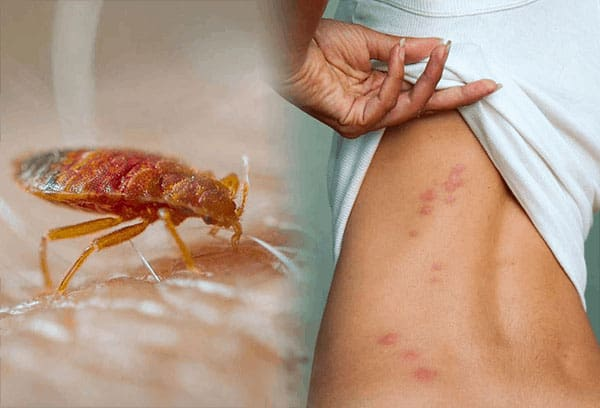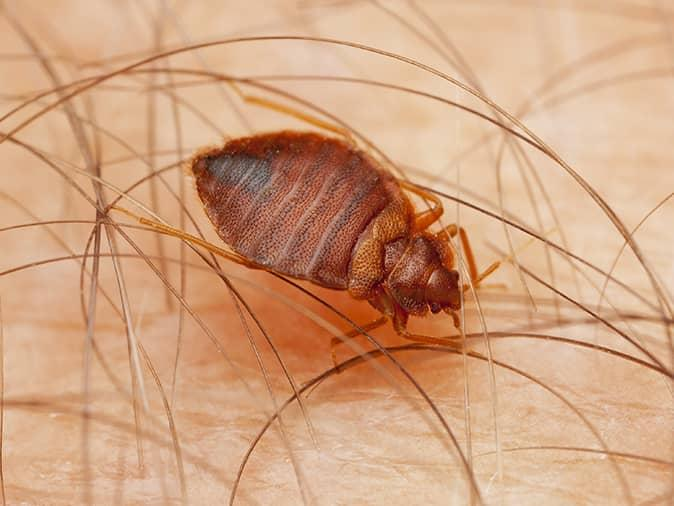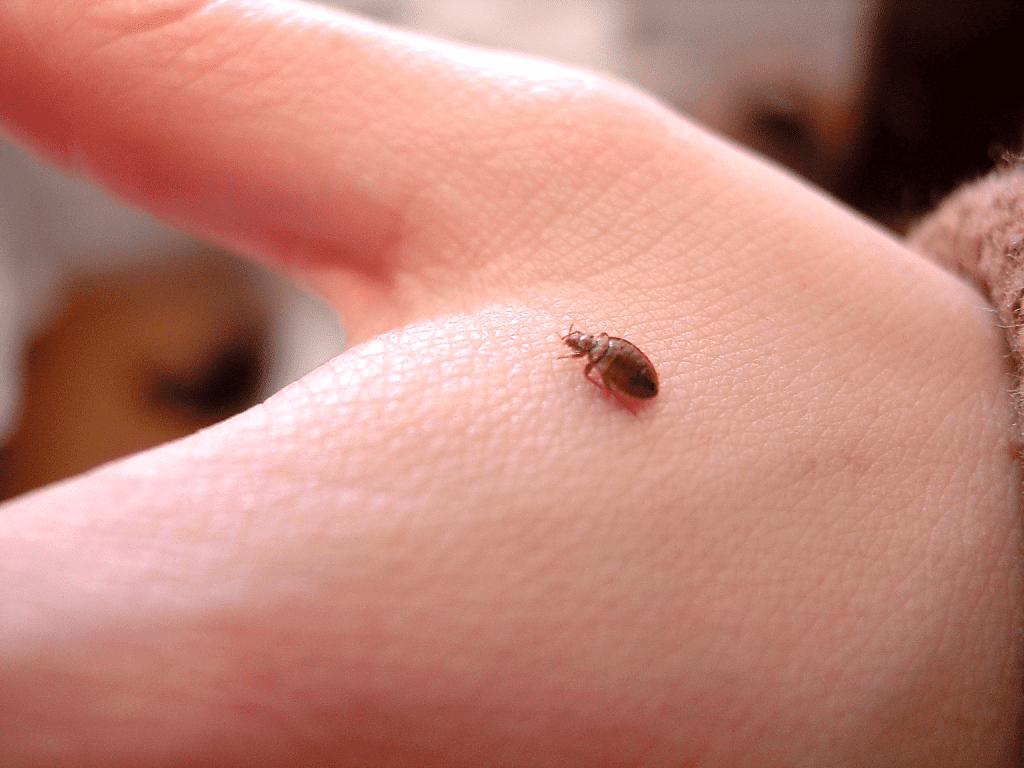There’s nothing worse than waking up to itchy bites and not knowing the cause. If you’re experiencing this and have three dogs nearby but have never seen a flea, you may be left scratching your head—literally. While fleas are often the first suspect in homes with pets, they’re not the only critters capable of sneaking in for a bite during the night. This article dives into the different possibilities of what could be biting you, signs to watch for, and how to solve the problem once and for all.

Signs and Symptoms of Bed Bug Bites
One of the first steps in identifying what’s biting you is to observe the characteristics of the bites themselves.
- Appearance of Bed Bug Bites: Bed bug bites often appear in clusters or a linear pattern. They are usually red, slightly swollen, and itchy. They commonly appear on exposed areas of the body, such as the neck, arms, and face.
- Difference from Flea Bites: Unlike flea bites, which tend to focus around the ankles and lower legs, bed bug bites can occur anywhere on the body. Flea bites also often have a red halo around them and are more likely to cause intense itching immediately after the bite.
If you notice these types of bites, bed bugs could be the culprit. But there are other possible suspects to consider.
Understanding Common Household Pests
Several household pests can bite or cause skin irritation. While fleas and bed bugs are the usual suspects, other pests could also be behind the mysterious bites.
- Fleas: These pests are notorious for feeding on humans and pets alike, especially if you have dogs or cats that spend time outdoors. Fleas are small, fast, and often jump from one host to another.
- Mosquitoes: While mosquitoes are usually associated with outdoor bites, they can enter your home through open windows or doors and feast on you while you sleep.
- Mites: Although tiny and hard to see, certain types of mites can cause itchy bites. For example, bird mites and rodent mites may enter your home if they lose their natural hosts, like birds or rodents.
- Lice: Body lice can cause bites that result in red, itchy welts, and they thrive in unsanitary conditions or through close contact with infested individuals.
Each of these pests has distinct habits, making proper identification essential to effectively eliminate the problem.
The Mystery of Invisible Fleas: Could They Be the Cause?
Even if you haven’t spotted any fleas on your dogs, that doesn’t mean they’re not present. Fleas are masters at hiding, especially in carpets, pet bedding, and upholstery. Here’s why you might not be seeing them:
- Flea Life Stages: Fleas go through four life stages—egg, larva, pupa, and adult. While adult fleas are more visible, larvae and pupae are harder to spot, as they often burrow into fibers and crevices.
- Flea Dirt: One of the signs of flea infestation is “flea dirt,” which looks like tiny black specks. You can check your pets for flea dirt by combing through their fur with a fine-toothed flea comb. If you find flea dirt, it’s a strong indicator that fleas may be the biting culprit.
- Nocturnal Behavior: Fleas are more active at night, making them more likely to bite while you’re sleeping. Keep this in mind when trying to determine if fleas are the source of the problem.
Exploring Pet-Related Parasites
Pets can carry various parasites besides fleas, some of which may cause skin irritation or bites.
- Ticks: Ticks attach to pets after spending time outdoors, especially in wooded or grassy areas. While they are less likely to bite humans inside the home, ticks can occasionally transfer from pets to people.
- Mange Mites: Dogs can carry mites that cause mange, which can result in itchy, rash-like symptoms in humans. Mites burrow into the skin, creating red, inflamed patches.

Regular grooming, frequent pet check-ups, and using veterinarian-approved flea and tick preventatives can help prevent these parasites from invading your home.
Bed Bugs: The Unwelcome Nighttime Guests
Bed bugs are infamous for their ability to hide during the day and emerge at night to feed on blood.
- Where to Look: Bed bugs can hide in crevices of mattresses, bed frames, furniture, and even behind wallpaper. Check for small brownish spots (fecal matter), shed skins, or tiny white eggs around your bed and furniture.
- What to Do: If you suspect bed bugs, start by thoroughly inspecting your mattress and surrounding areas. Bed bug traps and encasements can help monitor and control an infestation, but professional extermination is often needed for full eradication.
The Role of Dust Mites in Skin Irritation
Dust mites, while not biting pests, can still cause skin irritation, especially in people with sensitive skin or allergies.
- Dust Mite Allergies: Dust mites feed on dead skin cells and thrive in bedding, carpets, and upholstered furniture. Their presence can exacerbate eczema, asthma, and other allergic reactions, leading to itchy, irritated skin.
- Reducing Dust Mites: Regularly wash bedding in hot water, use dust-mite-proof mattress and pillow covers, and maintain humidity levels below 50% to control dust mites.
Less Common Culprits: Mites and Lice
Aside from fleas and bed bugs, other pests like mites and lice could be the reason for nighttime bites.
- Scabies Mites: These mites burrow into the skin, causing intense itching and rash. Scabies require medical treatment and thorough cleaning of bedding and clothing.
- Body Lice: Body lice live in clothing and can bite skin, leaving red, itchy marks. They are more common in crowded or unsanitary conditions and require thorough washing of clothing and bedding.

Allergic Reactions and Sensitive Skin
It’s also possible that what feels like bites could be an allergic reaction. New detergents, skincare products, or even certain fabrics can cause itchy, red spots that mimic the appearance of bites.
- Check for Allergens: Think about any recent changes in your environment. Have you switched to a new detergent, or introduced a new pet product? Identifying the allergen can help resolve the irritation.
Steps to Identify Bedtime Biters
To find out what’s biting you, follow these steps:
- Inspect Your Bed: Look for signs of bed bugs, fleas, or mites on your mattress, pillows, and bedding.
- Check Your Pets: Look for signs of fleas, ticks, or mites on your dogs, such as excessive scratching or visible flea dirt.
- Set Up Traps: Use glue traps or bed bug monitors near your bed to capture any insects present.
- Monitor Bite Patterns: Keep a journal of when and where the bites occur to identify potential patterns.
Effective Strategies for Pest Control
Once you’ve identified the culprit, it’s time to act.
- For Fleas: Use pet-safe flea treatments and wash all bedding in hot water. Consider using flea bombs or sprays in heavily infested areas.
- For Bed Bugs: Vacuum thoroughly, wash bedding at high temperatures, and use bed bug-proof encasements. Professional treatment may be necessary.
- For Mites and Lice: Follow a doctor’s treatment plan and thoroughly clean bedding, clothing, and carpets.
When to Call in Professional Help
If bites persist despite your best efforts, consider hiring a professional pest control service. They have access to stronger treatments and can identify hard-to-reach hiding spots that may be causing the issue.
Conclusion: Solving the Mystery of Nighttime Bites
Waking up to mysterious bites can be a frustrating and confusing experience, but by identifying the possible culprits—whether fleas, bed bugs, mites, or allergies—you can effectively address the problem. With proper inspection, treatment, and preventive measures, you can restore your peace of mind and finally get the restful sleep you deserve.


